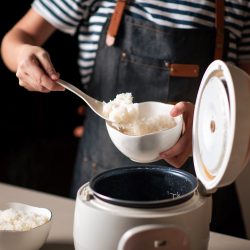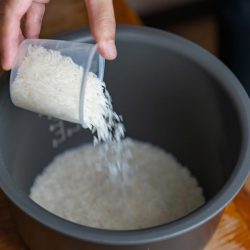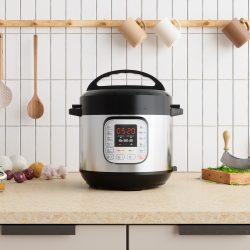In recent years, brown rice has grown in popularity as a nutritious alternative to its high-carb, low-fiber white counterpart. But can you cook brown rice in a rice cooker? We've counted every grain while researching this pantry staple, and here's what you need to know:
You can absolutely make brown rice in a rice cooker, even if it doesn't have a brown rice setting! Simply follow these easy steps:
- Rinse and drain the rice
- Add the rice to the rice cooker
- Add water to the rice cooker (2 parts for each part of rice, by volume)
- Turn on the rice cooker
- After the rice cooker finishes, wait 10-15 minutes before opening
- Fluff the rice with a rice cooker spoon
- Enjoy
Of course, if your rice cooker has a brown rice setting, simply follow the manufacturer's instructions for brown rice perfection.
In this article, we'll look more at the differences when making brown rice in a rice cooker. We'll also see what it is about brown rice that makes it so healthy and slow cooking as well as the facts and fiction of soaking your brown rice. Keep reading to learn all about it.
![A rice cooker filled with freshly cooked rice, Can Rice Cookers Cook Brown Rice? [And How to]](https://kitchenseer.com/wp-content/uploads/2022/02/Can-Rice-Cookers-Cook-Brown-Rice-And-How-to-667x1000.png)
Does brown rice cook the same as white rice in a rice cooker?
The process for cooking brown rice is almost identical to cooking white rice when using a rice cooker. There are, however, a couple of key differences.
Water Ratios for White and Brown Rice
The first is the volume of water. When preparing white rice in a rice cooker, it is typical to use equal parts of rice and water by volume.
Certain recipes or varieties of rice may take more, but it tends to stay near a 1:1 ratio. Most rice cookers have lines in the pot to let you know the correct water levels for different amounts of white rice.
However, brown rice usually requires more water. If your rice cooker doesn't have a brown rice setting, a good rule of thumb is to use 2 parts of water for every 1 part of brown rice by volume. This means that, for 1 cup of dry brown rice, you'll add 2 cups of water.
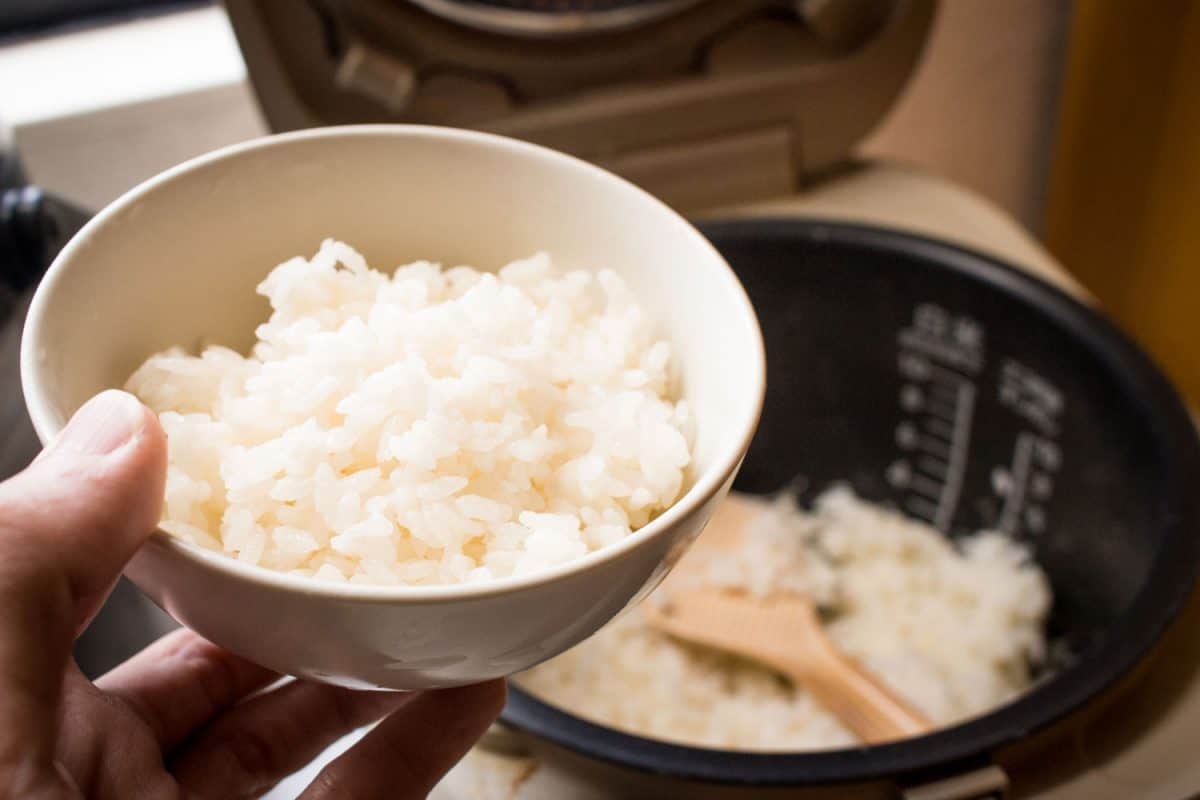
When measuring your rice and water this way, be sure not to do more than your rice cooker can handle. This can lead to bubbling over and overflowing. Check out this article for more on this topic: Why Does My Rice Cooker Overflow?
If your rice cooker does have a brown rice setting, follow the instructions from the manufacturer to get the ratios right. Sometimes these settings use lower temperatures and longer times than white rice, which reduces the amount of water needed.
Another important difference is time. Brown rice takes longer to cook than white rice, including in a rice cooker. It should also rest longer after the rice cooker has finished. When cooking brown rice, you'll want to get an earlier start.
How long does it take to cook brown rice in a rice cooker?
The time it takes to cook brown rice will depend on the amount you are making and your specific model. One thing is consistent, though. Brown rice takes longer to cook than white rice—typically about twice as long.
For example, it takes the Aroma rice cooker 30-35 minutes to cook 2 cups of dry white rice on the standard white rice setting. The same quantity of brown rice takes 65-70 minutes on the brown rice setting. On the quick setting, the white and brown rice take 17-22 minutes and 33-43 minutes to cook, respectively.
Click here to see this 8-cup Aroma rice cooker on Amazon.
Some rice cookers take even longer to make brown rice. The Zojirushi Neuro Fuzzy rice cooker has a reputation for being high quality and producing perfect rice every time.
One of Zojirushi's secret ingredients, though, is time. Brown rice takes 82-104 minutes in this top-shelf rice cooker, so be sure to plan ahead.
Click here to see this 5.5-cup Zojirushi Neuro Fuzzy rice cooker on Amazon.
Why does brown rice take so long in a rice cooker?

We've seen that brown rice takes about twice as long as white rice to cook in a rice cooker, but why? The same factor that makes brown rice more nutritious also makes it harder to cook: the bran.
The bran is the hard outer layer of the grain of rice. When rice is milled to make white rice, the bran and germ are removed. Brown rice still has the bran and germ intact, hence why it is referred to as a whole grain.
The bran is much less absorbent than the fluffy, starchy center of the rice. This is why it takes more time and typically more water to cook. This is true for both stovetop and rice cooker preparations.
This time difference is especially noticeable in rice cookers that have a brown rice setting. The brown rice setting uses a lower temperature during part or all of the cooking process. While this increases the amount of time, it improves the texture of the resulting rice.
If brown rice is cooked at high temperatures, the white center will absorb water before the bran has time to soften. This leads to the bran splitting and the white getting mushy before the bran is cooked.
By using lower temperatures, the bran and center can cook evenly, leaving you with a more appetizing bowl of nutritious brown rice.
Why make brown rice?
With the lengthy cooking time and special settings for brown rice, you may wonder why even bother. The upside to the time commitment is that the bran and germ contain a lot of nutritional value. It is rich in dietary fiber, essential fatty acids, vitamins, protein, and minerals.
Given all the nutrition in the bran, the better question might be, "Why do they remove the bran at all?" The answer is about more than just the convenience of having a quick-cooking bowl of rice.
The same healthy oils in brown rice that make it a nutritional powerhouse also make it vulnerable to spoiling. White rice has a much longer shelf life than brown rice. That's why, even though white rice requires more processing, it is usually cheaper than brown rice.
Does brown rice need to be soaked?
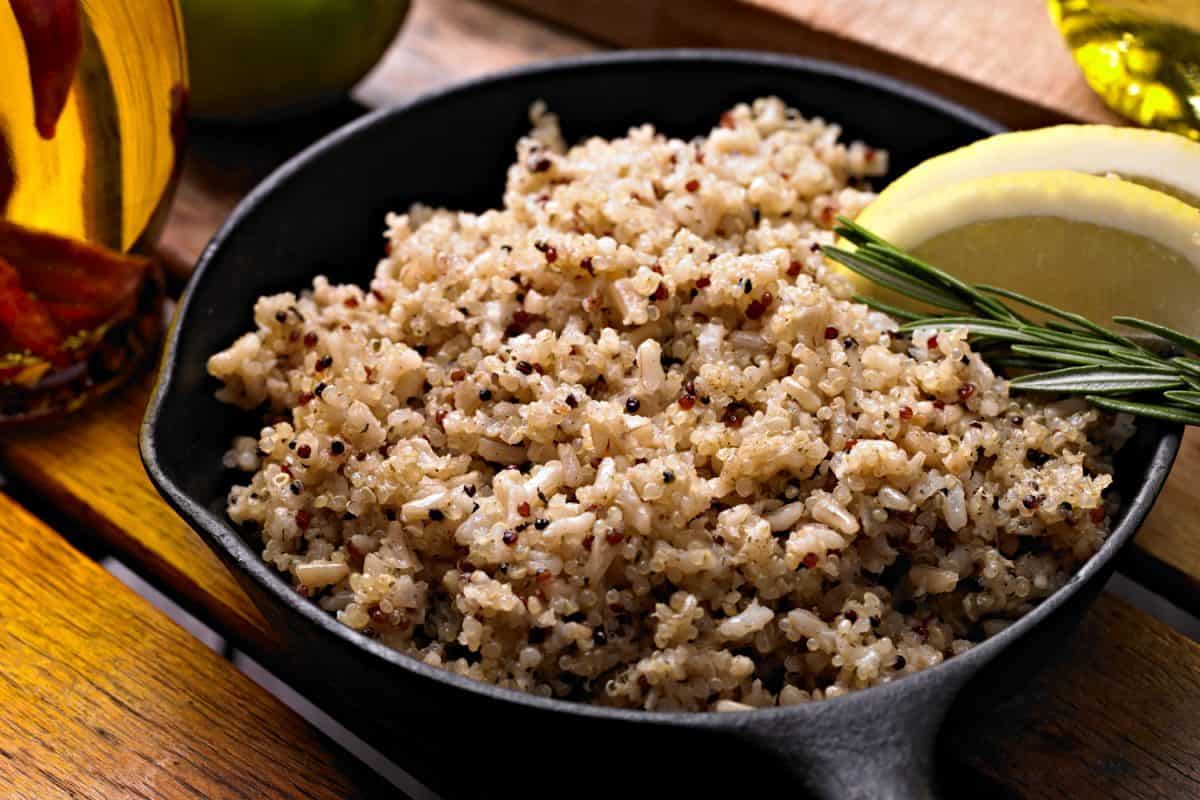
One option to speed up your brown rice is to soak it ahead of time. While not a necessary step, this can decrease your cooking time considerably. Soaking also helps soften the bran, which leads to a better final texture.
The simplest method is to just soak your rice in twice as much water for two hours or up to overnight before cooking it.
Once you are ready to prepare your rice, discard the soaking water and cook your rice. The rice will have plumped up a bit from the soaking, so you can use the same lines in your rice cooker as usual.
If you are measuring your water separately either because your rice cooker doesn't have lines for brown rice or you are cooking on the stovetop, you'll reduce the ratio of water to rice. For soaked brown rice, you'll need about 1.5 parts of water for every part of soaked rice, by volume.
If you opt for stovetop cooking, check out this article: What’s the Best Pot for Cooking Rice? [Size and Type] You'll find great advice and examples on the sizes and styles of pots that will help you reach your own personal rice nirvana.
Mythbusting: Soaking Rice and Phytic Acid
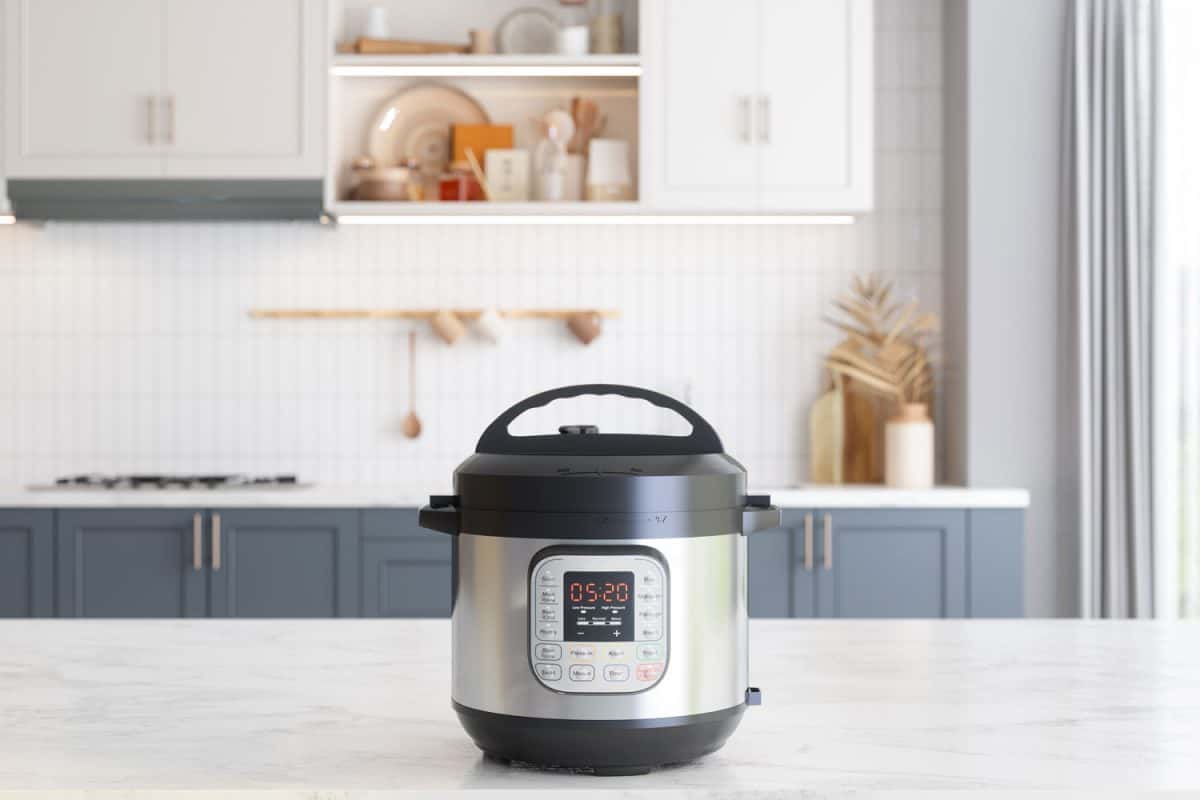
Brown rice, like many plants, contains a naturally occurring chemical called phytic acid. This chemical reduces the bioavailability of many nutrients. In simpler terms, even though brown rice contains great things like iron, zinc, and magnesium, the phytic acid makes it harder for our bodies to absorb them.
You will sometimes come across articles and recipes that say that soaking rice removes phytic acid, often citing this 2008 study or blogs that reference it. This isn't quite the whole story, though.
The researchers in that study looked at different treatments and their effect on phytic acid and zinc bioavailability in brown rice. The researchers did find that brown rice that had been soaked contained less phytic acid.
However, the soaking was done under a very specific procedure, which included heating the rice and soaking it in demineralized water for one or seven days, depending on the heating procedure.
Furthermore, the researchers took other measures of zinc's bioavailability that didn't show any improvement following the treatment.
While this study has been cited by proponents of soaking (as well as fermenting) brown rice, the authors themselves didn't reach that conclusion. Instead, they say that "neither soaking, germination, nor fermentation significantly improves [sic] the apparent bioavailability of minerals in rice."
So while soaking may speed up the cooking time of brown rice, take claims that it improves nutrition with a grain of salt.
Final Thoughts
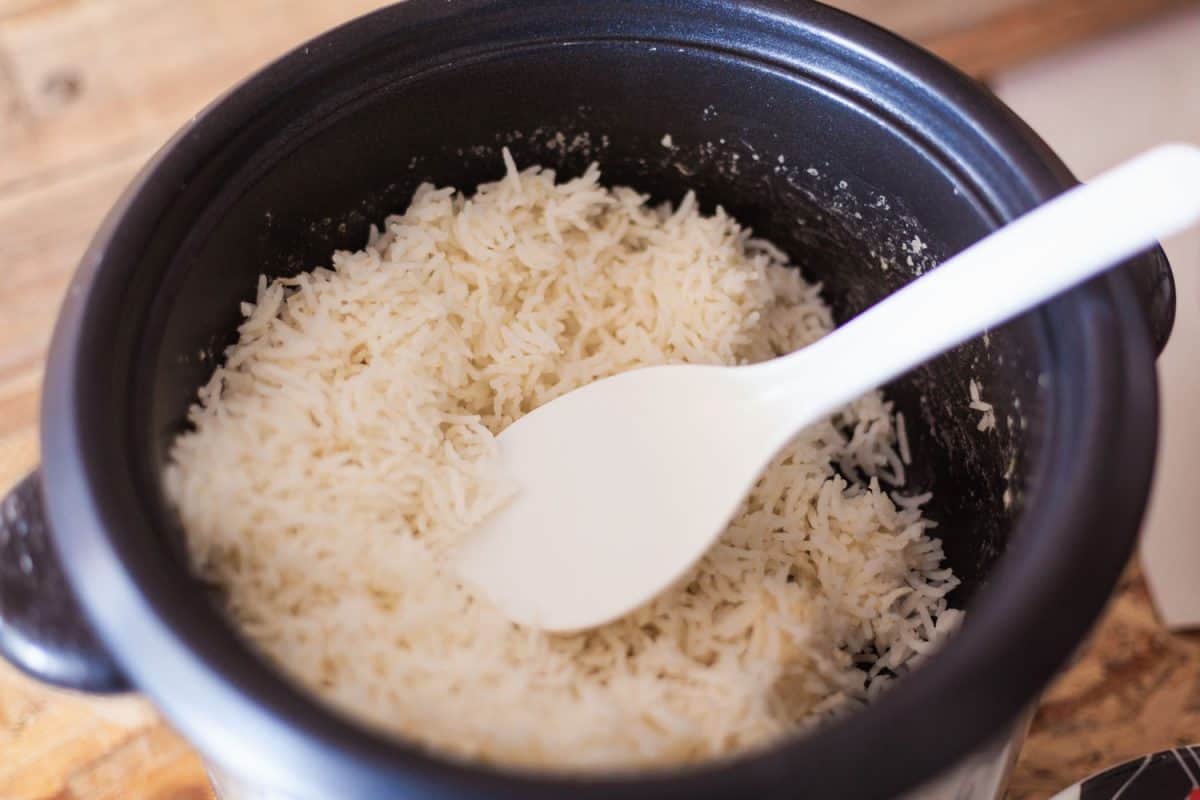
Whichever rice cooker you own, you now know how to use it to make bowl after bowl of scrumptious and healthy brown rice. We've also learned a little bit more about what makes brown rice special and seen the benefits and myths around soaking your rice.
Armed with this knowledge, you'll be well on your way to bountiful buddha bowls and perfect pilafs. Happy cooking and bon appétit!



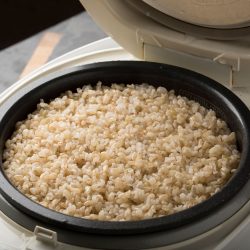
![Pour water into rice - How Much Water To Rice In Rice Cooker [Ratio By Type Of Rice]](https://kitchenseer.com/wp-content/uploads/2022/03/Pour-water-into-rice-250x250.jpg)

